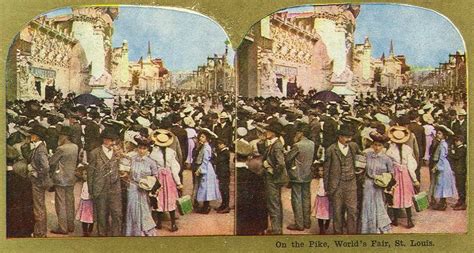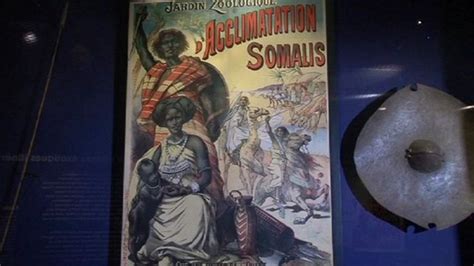did louis vuitton own a human zoo | Louis Vuitton human zoo exhibit did louis vuitton own a human zoo A viral claim asserts that Louis Vuitton sponsored human zoos in the 19th and 20th centuries. Louis Vuitton says the claim is false.
What is the max level Balloon in Clash of Clans? Currently, the max level of Balloon is level 11 which is available at Town Hall 16.
0 · world's fair 1904 specimen days
1 · were human zoos real
2 · human zoo new york 1906
3 · did human zoos exist
4 · black girl in 1958
5 · Louis Vuitton traveling circus
6 · Louis Vuitton human zoo exhibit
7 · 1904 world's fair human zoo
CASIO Calculatrice LC-401 LV-PK "Petite fx" fonctionne avec pile, EXTRA BIG LCD à 8 chiffres, capot de protection, calcul de la racine, calcul du pourcentage, me-moire indépendante, changement de signe, couleur: rose, poids: env. 68 g, dimensions: (L)75 x (P)120 x (H)10,7 mm (LC-401 LV-PK)
Claim: In the late 1800s and early 1900s, Louis Vuitton sponsored "human zoos" in which black people were put on display like exotic circus animals.

There is, however, no evidence that Louis Vuitton, the company or the man, sponsored the “human zoos” of the 19th and 20th centuries. An internet search turned up no . “Did you know in the late 1800s and early 1900s, Louis Vuitton sponsored ‘human zoos’ in which black people were put on display like exotic circus animals?” This distressing .
These shocking rare photographs show how so-called ‘human zoos‘ around the world kept ‘primitive natives’ in enclosures so Westerners could gawp and jeer at them. The .
A group of Igorot displayed during the St. Louis World's Fair [1] [2] Natives of Tierra del Fuego, brought to the Paris World's Fair by the Maître in 1889. Human zoos, also known as . A viral claim asserts that Louis Vuitton sponsored human zoos in the 19th and 20th centuries. Louis Vuitton says the claim is false. An exhibition in Paris looks at the history of so-called human zoos, that put inhabitants from foreign lands, mostly African countries, on display as article of curiosity. Over .
If visitors to the 1904 St. Louis World’s Fair grew bored of strolling along spectacular purpose-built waterways or lolling through the grand pavilions of arts and industry, . The “Human Zoo” exhibition features a contemporary art installation by the Burundi-born photographer Teddy Mazina, which pictures Africans measuring Europeans in a .Claim: In the late 1800s and early 1900s, Louis Vuitton sponsored "human zoos" in which black people were put on display like exotic circus animals.
We rate the claim that Louis Vuitton sponsored racist "human zoos" in the 19th and 20th centuries FALSE because it is not supported by our research. There is, however, no evidence that Louis Vuitton, the company or the man, sponsored the “human zoos” of the 19th and 20th centuries. An internet search turned up no sourcing to corroborate the post’s claims. “Did you know in the late 1800s and early 1900s, Louis Vuitton sponsored ‘human zoos’ in which black people were put on display like exotic circus animals?” This distressing message has been circulating on Facebook in South Africa since at least February 2021. These shocking rare photographs show how so-called ‘human zoos‘ around the world kept ‘primitive natives’ in enclosures so Westerners could gawp and jeer at them. The horrifying images, some of which were taken as recently as 1958, show how black and Asian people were cruelly treated as exhibits that attracted millions of tourists.
A group of Igorot displayed during the St. Louis World's Fair [1] [2] Natives of Tierra del Fuego, brought to the Paris World's Fair by the Maître in 1889. Human zoos, also known as ethnological expositions, were public displays of people, usually in a so-called "natural" or "primitive" state. [3] A viral claim asserts that Louis Vuitton sponsored human zoos in the 19th and 20th centuries. Louis Vuitton says the claim is false.
world's fair 1904 specimen days
An exhibition in Paris looks at the history of so-called human zoos, that put inhabitants from foreign lands, mostly African countries, on display as article of curiosity. Over four centuries. If visitors to the 1904 St. Louis World’s Fair grew bored of strolling along spectacular purpose-built waterways or lolling through the grand pavilions of arts and industry, their wandering search for diversion might have taken them to the Philippine Reservation. The “Human Zoo” exhibition features a contemporary art installation by the Burundi-born photographer Teddy Mazina, which pictures Africans measuring Europeans in a kind of role reversal.Claim: In the late 1800s and early 1900s, Louis Vuitton sponsored "human zoos" in which black people were put on display like exotic circus animals.
sac a dos jaycee michael kors
We rate the claim that Louis Vuitton sponsored racist "human zoos" in the 19th and 20th centuries FALSE because it is not supported by our research. There is, however, no evidence that Louis Vuitton, the company or the man, sponsored the “human zoos” of the 19th and 20th centuries. An internet search turned up no sourcing to corroborate the post’s claims.
“Did you know in the late 1800s and early 1900s, Louis Vuitton sponsored ‘human zoos’ in which black people were put on display like exotic circus animals?” This distressing message has been circulating on Facebook in South Africa since at least February 2021.
michael kors sac cuir
were human zoos real
These shocking rare photographs show how so-called ‘human zoos‘ around the world kept ‘primitive natives’ in enclosures so Westerners could gawp and jeer at them. The horrifying images, some of which were taken as recently as 1958, show how black and Asian people were cruelly treated as exhibits that attracted millions of tourists.A group of Igorot displayed during the St. Louis World's Fair [1] [2] Natives of Tierra del Fuego, brought to the Paris World's Fair by the Maître in 1889. Human zoos, also known as ethnological expositions, were public displays of people, usually in a so-called "natural" or "primitive" state. [3] A viral claim asserts that Louis Vuitton sponsored human zoos in the 19th and 20th centuries. Louis Vuitton says the claim is false.

An exhibition in Paris looks at the history of so-called human zoos, that put inhabitants from foreign lands, mostly African countries, on display as article of curiosity. Over four centuries.
If visitors to the 1904 St. Louis World’s Fair grew bored of strolling along spectacular purpose-built waterways or lolling through the grand pavilions of arts and industry, their wandering search for diversion might have taken them to the Philippine Reservation.
human zoo new york 1906

With its compact shape and on-trend design, the Catch bumbag expresses a high-fashion downtown spirit. Crafted in Monogram Eclipse canvas, it’s perfect for keeping personal items close at hand. And the fast-release buckle on the LV jacquard signature strap makes it convenient for men on the go.
did louis vuitton own a human zoo|Louis Vuitton human zoo exhibit



























